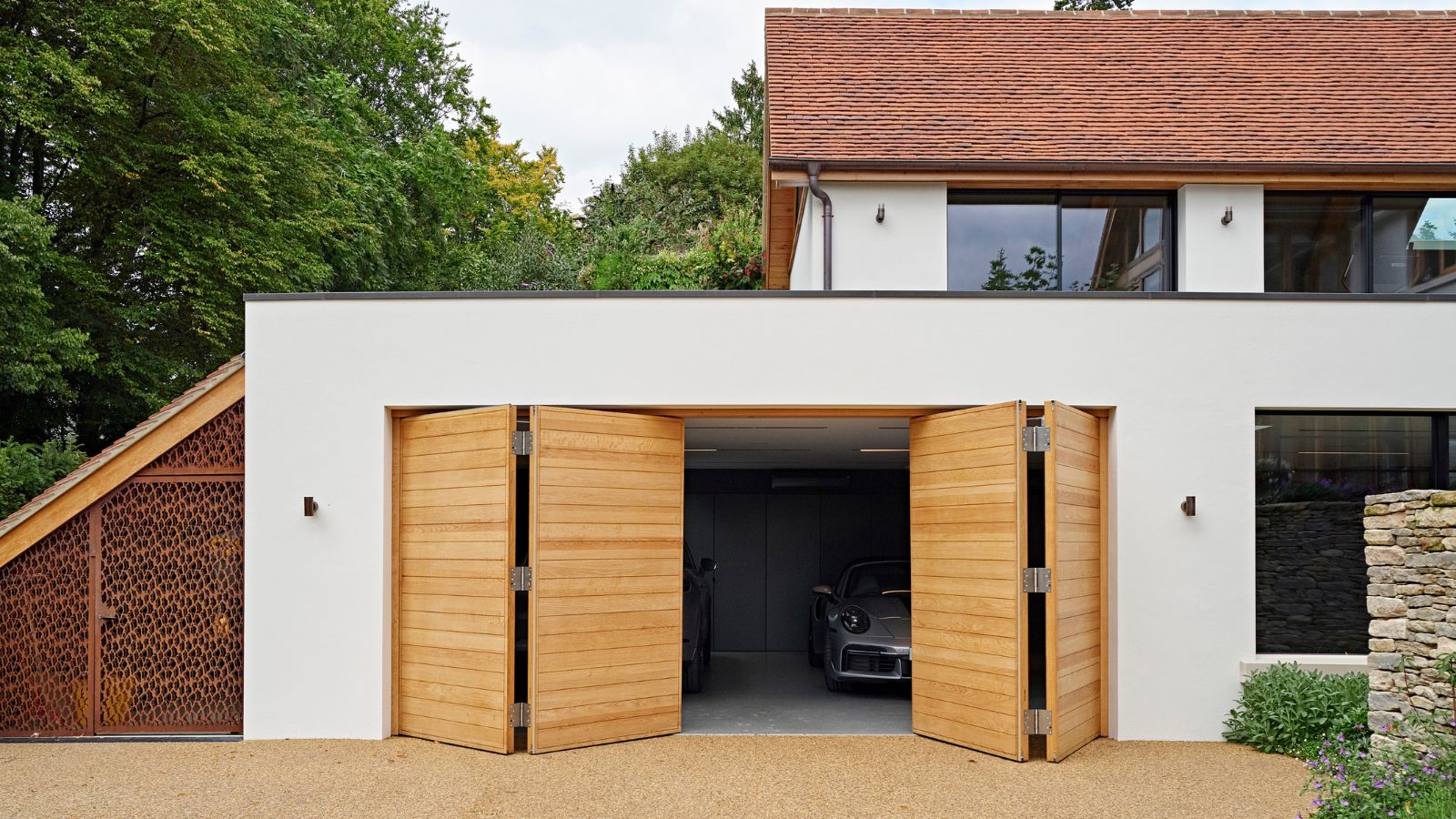Can you paint laminate flooring for a quick home update?
Can you paint laminate flooring and could this be the ideal, low cost way to give your interior design scheme a speedy refresh? We take a look whether this is a job worth tackling
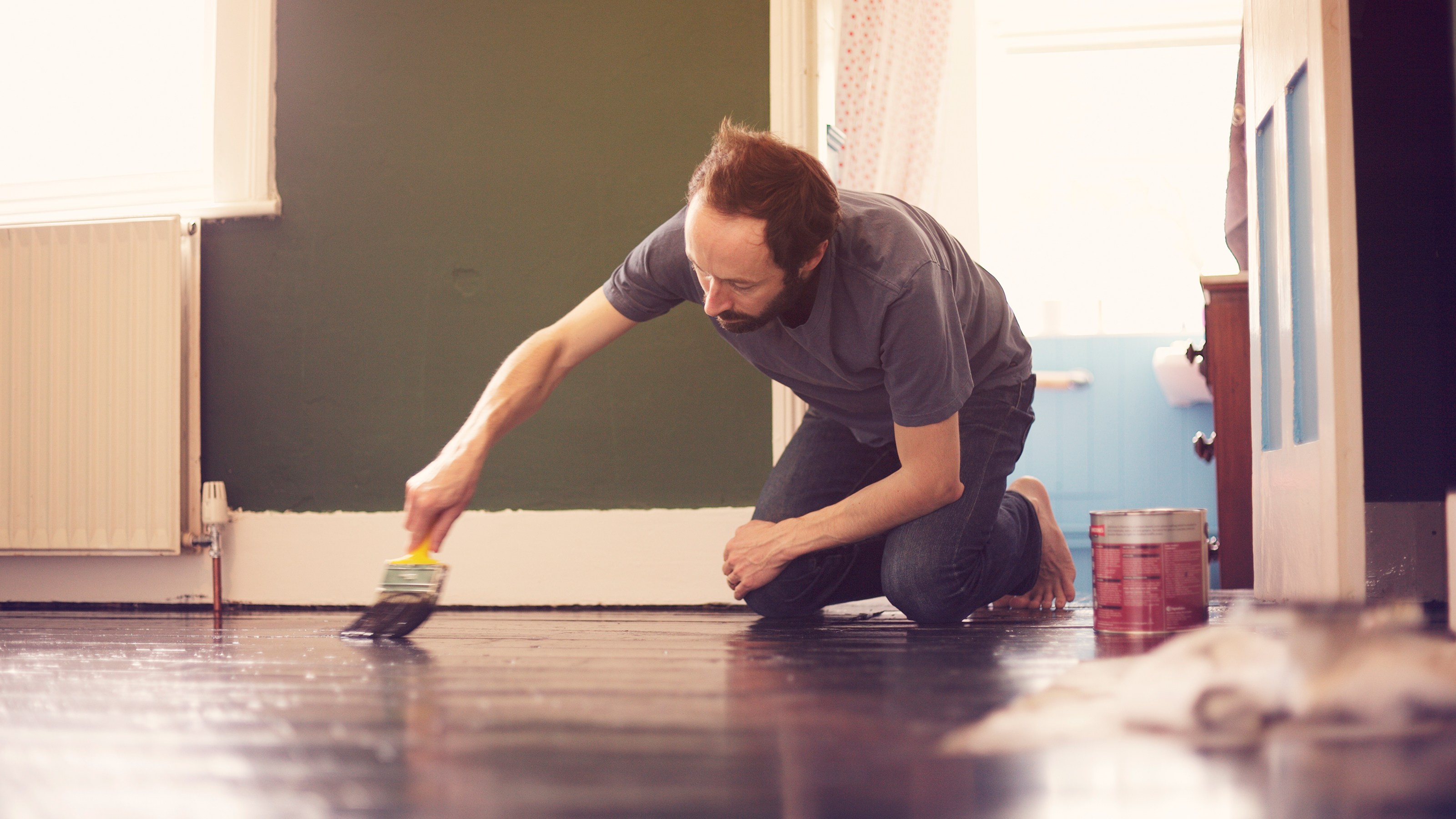
You might be well be asking 'can you paint laminate flooring?' if you are after a fast and cheap way to give your home a makeover.
With regards to the various types of flooring around, laminate is a really popular option, being easy to install, budget-friendly, widely available and easy to find in a whole host of colours, finishes and designs. It is also hardwearing and durable.
That said, after having the same floor for some time, it is perfectly understandable to fancy changing up your interior scheme a little to reflect trends or match your new decorating scheme or furniture. One of the best ways to almost instantly transform a room is to change the flooring — but buying and laying a new floor can be really expensive.
This is where updating your existing flooring comes in. If you have a laminate floor, not only will painting it instantly change the way it looks, but it will also hide any scratches well — plus it will save you a considerable about of money and disruption.
But, can and should you paint laminate flooring? Here, we take a look at what the job entails, how to carry out the job successfully and where it might be best to avoid this task.
Can you paint laminate flooring or is it a bad idea?
The good new is that, yes, you can paint laminate flooring. That said, there are several factors that will determine the success of this project and it is crucial that you familiarise yourself with these before ploughing ahead with the task.
Just as when painting floorboards, the type of paint you use, how it is applied and how you prepare the existing floor will all have an effect on the end result.
Bear in mind that, unlike types of wood flooring, laminate is made up of several layers, including a base layer, a core for strength and a 'décor layer' featuring a design, colour or wood or stone effect. There will also be a protective top layer, often made of a clear melamine resin.
It is important that you realise,the painted finish you give your laminate flooring will not last indefinitely and is likely to be prone to scuffing, peeling and chipping — that said, if you are happy with a bit of a rustic look and a quick fix, this may not be a concern.
"Personally, we don’t recommend painting over laminate flooring — painted laminate can look messy once it gets scratched, and the just-painted look doesn’t last very long," says Jack Woods, Director at Flooring Village. "Plus, it’s hard to do properly. But if you’re going for a distressed, shabby chic look, painted laminate might work for you."
What is the best paint for laminate flooring?
There are several different paints for laminate flooring — but it is vital that you check the one you select will be suitable for this purpose.
Many floor paints state what kind of flooring they can be used on, but you need to be on the look out for dedicated floor and stair paints. B&Q's GoodHome Durable Sedona Matt Floor & Stair Paint states that it is suitable for laminate flooring, and most experts recommend using a latex- or polyurethane-based paint to ensure the durability of the floor. Enamel paint is also often seen as a good option.
In short, check the manufacturer's advice before applying the paint — and don't think you can just dig out that old tin of emulsion you used on your walls as the results could be disastrous.
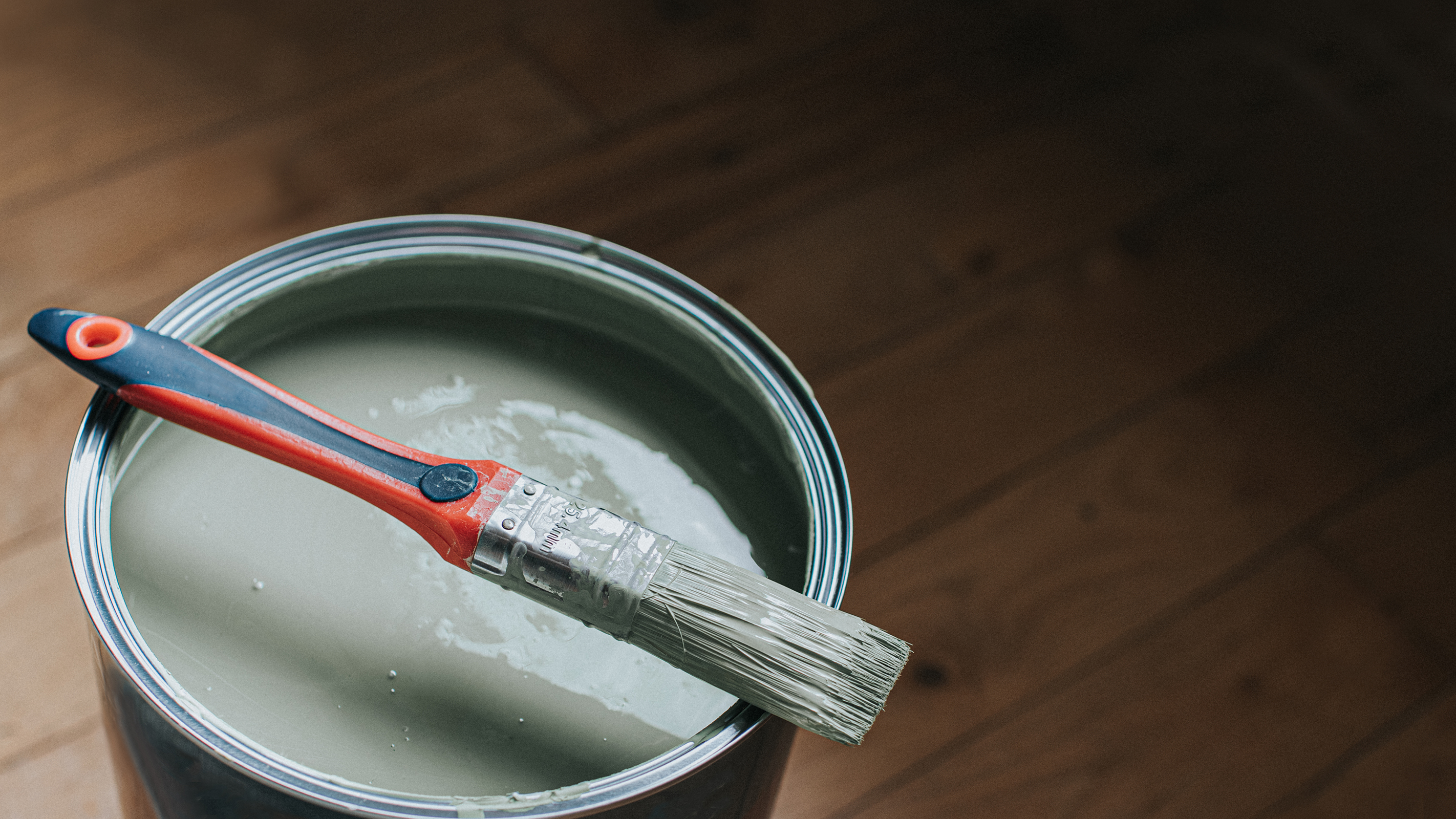
How to paint laminate flooring: Step-by-step guide
Before getting stuck into painting your floors, be sure to protect your walls and furniture.
The key to getting this job spot on is to thoroughly prepare your floor before starting, and to make sure you arm yourself with the right kit.
You will need:
- Primer/undercoat
- Suitable floor paint
- Sandpaper (and possibly an orbital sander)
- Paint roller and tray
- Paintbrushes
- Masking tape
- Sealant
Once you have assembled the materials you need you are ready to begin.
1. Clean the floor
Before you begin, thoroughly clean your floor to remove dust, dirt, grease and any hair. Vacuum or sweep then mop or wipe with a suitable cleaner and dry.
2. Sand your laminate floor
It is crucial to sand the floor in order to remove its shiny finish — without doing this, your paint won't adhere and bond to the surface properly.
Although you can do this using sandpaper alone, an orbital sander will make light work of larger areas. A hand sander or sandpaper will come in useful for awkward to reach spots, edges and corners.
Thoroughly vacuum and clean the floor of all dust after carrying out this step.
3. Apply a suitable floor primer
You must prime the floor before you can paint it. Not all floor primers will be suitable for laminate — some wood floor primers specifically state they are not to be used on this type of surface. Look out for products such as Trade Super grip White Multi-surface Primer from Dulux, available from B&Q.
The primer you choose will probably come with its own set of instructions, but be sure to use masking or painters tape before applying to protect your skirting boards.
You will usually need to apply at least two coats and the drying times will vary — check the manufacturer's instructions here as it is crucial to allow the primer to completely dry out before you start painting the floor.
Word of caution here, start priming in the corners that are furthest away from the entrance to the room so that you don't end up painting yourself into a corner.
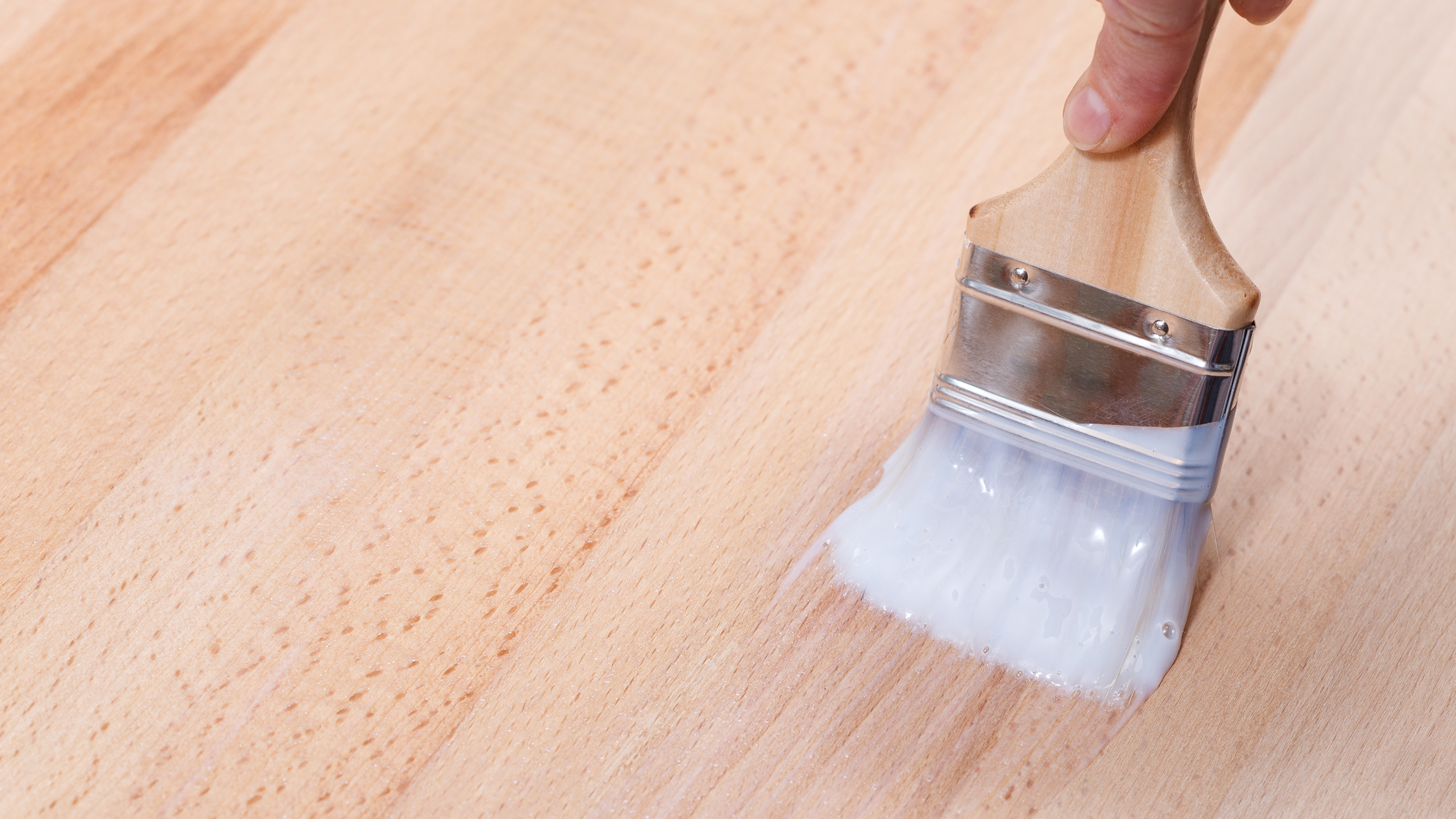
4. Paint the floor
You can use a paint roller or paintbrush for this stage — a roller is usually the best option for larger rooms. Use a smaller paintbrush around the perimeter of the room and to fill in any hard to reach spots.
Begin by painting around the edges of the room (known as 'cutting in') and then fill in the middle. It is easiest to paint in line with the grain of the laminate if it is heavily textured and this will give a nice smooth finish too.
You may need several coats of paint.
5. Finish with a floor sealant
Finally, when the paint is completely dry, you will need to apply a good quality sealant — look out for one that is polyurethane based.
Using a sealant will increase the durability of the floor and ensure the paint doesn't chip or peel prematurely.
Try a product such as Ronseal Clear Laminate Sealant from B&Q.
Can you stain laminate flooring?
Staining a laminate floor can be a good alternative to painting as it tends to result in a longer-lasting finish and any subsequent chips or scratches will be far less obvious.
"You can actually buy specialised laminate flooring finishes instead of using paint, which will work like a wood stain," says Jack Woods. "Laminate is not as absorbent as wood, so using a normal wood stain will not work."
It can be tricky to find stains that are suitable for laminate and you might find it easier to use a coloured sealant or varnish.
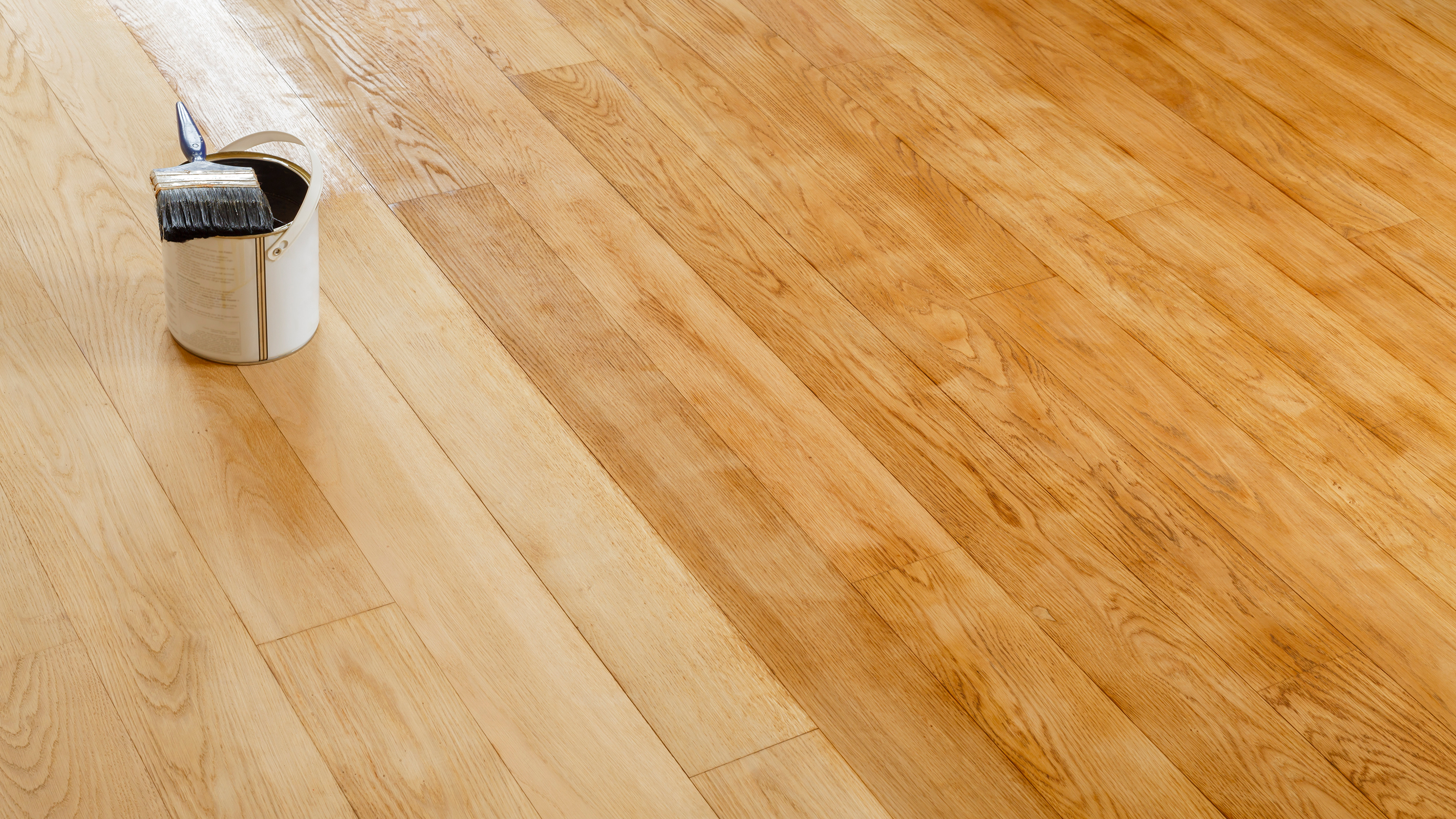
Can you whitewash laminate flooring?
Whitewashing laminate flooring actually offers quite a good alternative to painting due to the fact that it is meant to result in a less-than-perfect shabby chic end result.
All the preparation steps should be carried out as if you were painting the floor, but you will need to make up a whitewash using white paint suitable for laminate floors mixed with water.
Get the Homebuilding & Renovating Newsletter
Bring your dream home to life with expert advice, how to guides and design inspiration. Sign up for our newsletter and get two free tickets to a Homebuilding & Renovating Show near you.
Natasha was Homebuilding & Renovating’s Associate Content Editor and was a member of the Homebuilding team for over two decades. In her role on Homebuilding & Renovating she imparted her knowledge on a wide range of renovation topics, from window condensation to renovating bathrooms, to removing walls and adding an extension. She continues to write for Homebuilding on these topics, and more. An experienced journalist and renovation expert, she also writes for a number of other homes titles, including Homes & Gardens and Ideal Homes. Over the years Natasha has renovated and carried out a side extension to a Victorian terrace. She is currently living in the rural Edwardian cottage she renovated and extended on a largely DIY basis, living on site for the duration of the project.

